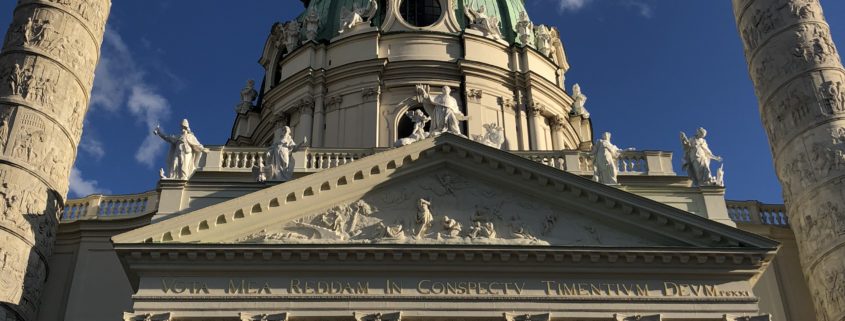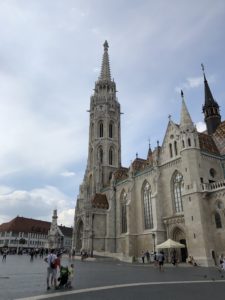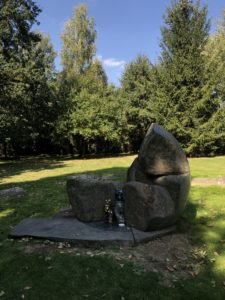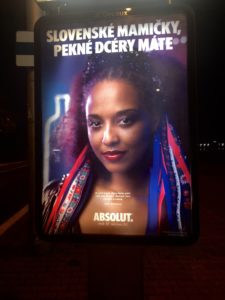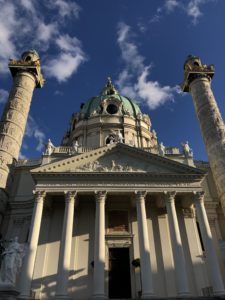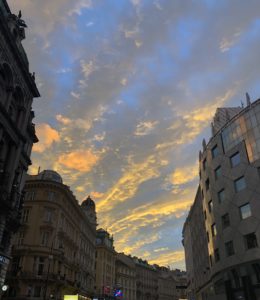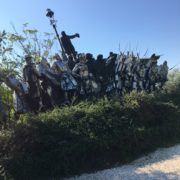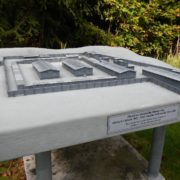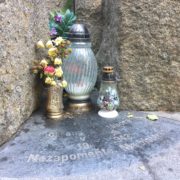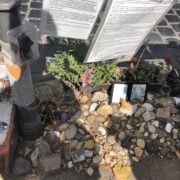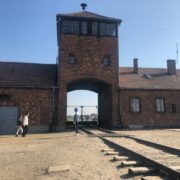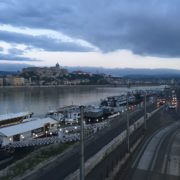Nations as Extended Family
By Autumn McMillan
I’ve been to five countries in the last two weeks – Hungary, Slovakia, Austria, Poland, and Czech Republic. When I call home to my friends I always make sure to open up with this punch-line. Yet during my journey through these five countries, a frustrating contradiction stood out to me. Each of our readings highlights the overlapping history between these nations and yet many of our tours fails to mention it, insisting on a nation-specific narrative that separates the history of today’s nation states from their common past. In the last 100 years of Central European history the borders of the five countries that I traveled through have been dramatically affected by war and regime change. These geopolitical changes had an impact on the interpretation of history and construction of memory narratives. As we ended our travels in Poland, I began to question the history that made each national identity distinctive.
My critical questioning of how the histories of these nations were negotiated over time began in Hungary. Our tour guide pointed out that Hungarian culture often includes nostalgic references to its past as a powerful nation. In medieval times, enemies prayed to be protected from brutal Hungarian warfare. The prayer represented Hungarians as strong and victorious, and is still a source of pride for many current Hungarians. Our tour guide also expressed a national pain that can be found in a line from their national anthem that translates, “please lord have mercy because we have already suffered.” These two anecdotes paint Hungary as a nation that has been a victim of the tyranny of foreign occupation, but throughout history the Hungarian people have remained diligent in preserving their national identity. Hungarian identity cannot be watered down to a single group because of their multi-ethnic past, contradictory to the on-going push for a pure Hungary.
Much like Hungary, Slovakia is the epitome of the fluidity of Central European history. Blurring of identities and national histories howls at Devin Castle where Germany, Austria, and Hungary fought over for centuries. Despite the national change, the residents of this town did not change. It is said that the residents were Slavic in the morning, Hungarian in the day, and German at night. In other words, the Slavs performed as merchants, the Hungarians as farmers, and the Germans established the social culture of the town. The inhabitants of the town of Devin built a community in which the multicultural inhabitants peacefully coexisted. Now, Devin’s Castle officially rests in Slovakia due to it’s physical positioning on Slovak soil. However, had the Moravia River not been used as the border line, the Devin Castle could have a very different history than it does today. In reality, the Slovak identity is anything but static because in reality it has an overlap with the history of many other nations. After being a part of the Austro-Hungarian Empire, the Slovaks entered into a union with the Czechs to form Czechoslovakia in 1918 and did not gain full independence until the early 1990s when the federation split into two independent states – Czech Republic and Slovakia.
A question that stooped the whole class while in Prague was why Romani from the Czech Republic are not called Czech. I concluded that the exclusion of Romani history and identity from Czech history and identity creates a false impression that the Czech nation is ethnically homogenous. Throughout Central Europe, there is a dominant narrative of national victimhood and the ongoing battle for national unity. Often, minorities were seen as an obstacle for creating national identity, and Jewish and Roma people have been used as scapegoats for individuals to unite against rather than as groups that represent another way of being ‘Czech.’
A common theme that arose during our travel through the five countries that we visited is the narrative
of national uniqueness. However, how did these people develop specific attachments to different nation states without consistent borders? The true division lies in the imagination of those that identify with one nation or another. In his attempt to define a national identity, Benedict Anderson argues that it is impossible to remove the emotion of the people when defining a national identity. The creation of national identity is equivalent to a national artifact. Anderson proposes that national identities are imagined communities with built-in limits and sovereignty. They are imagined in the sense that although you will never meet all the individuals within the nation, in their mind there is an inexplicable bond between members of the same nation. It would be easier if people looked at national identity the same as kinship and religion rather than as a political ideology, says Anderson.
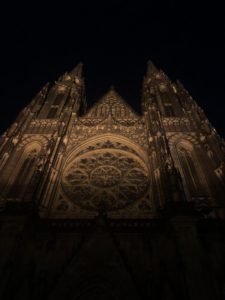 In reality, communities are distinguished based on how they were imagined. Looking specifically at each nation we have visited, a pattern emerges of how each national identity has developed as distinct from their neighbor. Hungary was a nation full of nostalgia and pride for their past. Slovakia humbly welcomed us, making it evident that they felt a strong connection to their rural heritage and community-orientated nature of their culture. In Austria, Vienna came off as polished and posh with a punch of dignity. The Czechs distinguished themselves as passionately self-dependent. This was evident at the Liberti Library, where they had preserved many texts from the underground resistance to the communist regime in order to protect the memory of their resilience as a nation. Their passion and self-dependence was also evident at the Library of Romafuturism. A library created to gather Roma literature and empower Romani to write their own history and mold their own futures. Although Romani are not included in the definition of what it means to be Czech, perhaps one day the non-Roma and Romani Czechs will find national unity.
In reality, communities are distinguished based on how they were imagined. Looking specifically at each nation we have visited, a pattern emerges of how each national identity has developed as distinct from their neighbor. Hungary was a nation full of nostalgia and pride for their past. Slovakia humbly welcomed us, making it evident that they felt a strong connection to their rural heritage and community-orientated nature of their culture. In Austria, Vienna came off as polished and posh with a punch of dignity. The Czechs distinguished themselves as passionately self-dependent. This was evident at the Liberti Library, where they had preserved many texts from the underground resistance to the communist regime in order to protect the memory of their resilience as a nation. Their passion and self-dependence was also evident at the Library of Romafuturism. A library created to gather Roma literature and empower Romani to write their own history and mold their own futures. Although Romani are not included in the definition of what it means to be Czech, perhaps one day the non-Roma and Romani Czechs will find national unity.
We often forget to include the emotion of the people in our critique of different nations. The nations have such a complex and blended history, that we often forget to consider why the borders were drawn in a specific way, and what is it that unifies each of these nations today. By taking Anderson’s advice and looking at nationhood as kinship, I was able to appreciate the distinctive histories presented by each nation.

